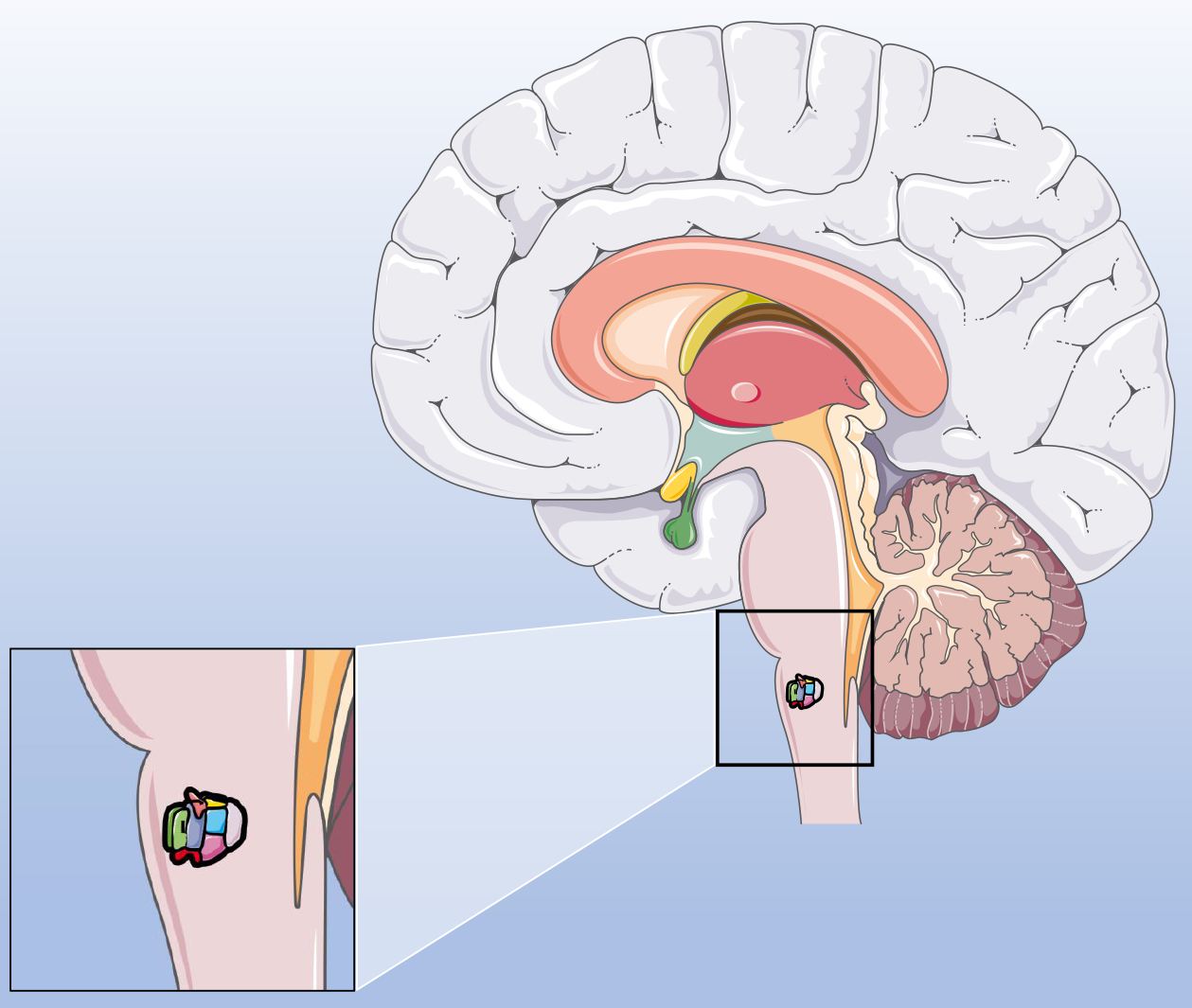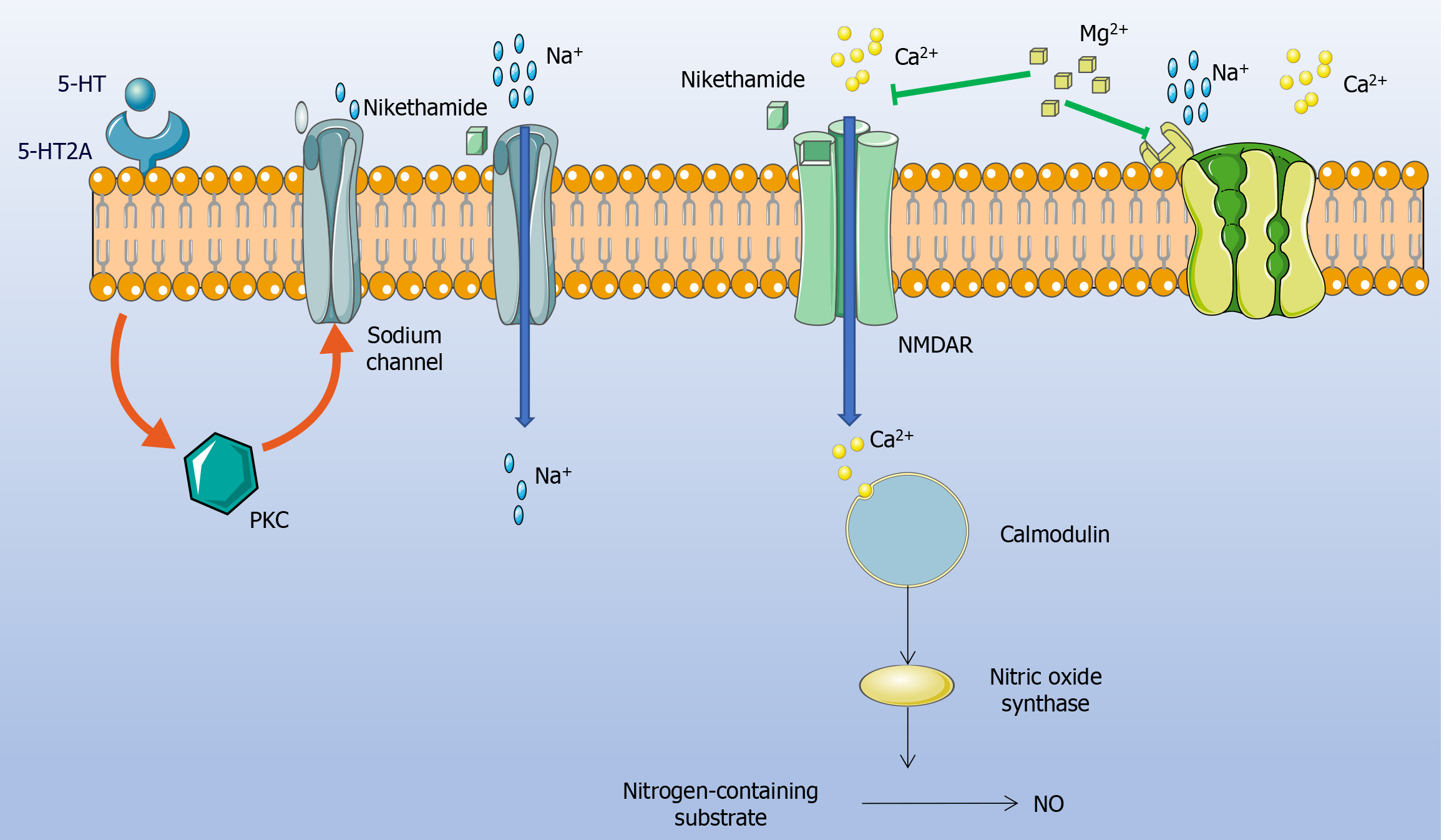Copyright
©The Author(s) 2025.
World J Methodol. Dec 20, 2025; 15(4): 105775
Published online Dec 20, 2025. doi: 10.5662/wjm.v15.i4.105775
Published online Dec 20, 2025. doi: 10.5662/wjm.v15.i4.105775
Figure 1 Comparison of incubation period, duration time, and death time among different groups.
The figure presents the comparison of three variables—incubation period, duration time, and death time—among the control, low dose, medium dose, and high dose groups. Each dot represents an individual data point, and the error bars indicate the standard deviation. Statistical significance is marked with asterisks: (1) aP < 0.05; (2) bP < 0.01; (3) cP < 0.001; and (4) dP < 0.0001. Horizontal lines with asterisks above bars denote significant differences between the two connected groups, while asterisks directly above bars indicate significant differences compared to the control group.
Figure 2 The position of the pre-Bötzinger complex.
The pre-Bötzinger complex is located in the ventrolateral medulla oblongata.
Figure 3 The molecular mechanism of the respiratory rhythm control center in the pre-Bötzinger complex.
The 5-hydroxytryptamine (5-HT) is an important neurotransmitter, can activate protein kinase C (PKC) by binding to the 5-HT2A receptor. PKC further regulates the conduction of sodium ions, which is essential for maintaining respiratory rhythm. The activation of N-methyl-D-aspartate receptors (NMDARs) leads to the influx of calcium ions (Ca2+) into neurons. Calmodulin is a calcium-binding protein, forms a complex with intracellular Ca2+ and further activates nitric oxide (NO) synthase to generate large amounts of NO. Magnesium ions (Mg2+) is a natural antagonist of NMDARs, can block Ca2+ influx through voltage-gated channels and thus antagonize NMDAR activation. Therefore, Mg2+ can be used as an antagonist to treat seizures caused by glutamate. Ca2+: Calcium ions; Mg2+: Magnesium ions; Na+: Sodium ions; NO: Nitric oxide; PKC: Protein kinase C; 5-HT: 5-hydroxytryptamine.
- Citation: Xu DJ, Zhong Q, Wang GT, Lu X. Preventive and therapeutic effects of magnesium sulfate on nikethamide-induced seizures: Implications for COVID-19 treatment. World J Methodol 2025; 15(4): 105775
- URL: https://www.wjgnet.com/2222-0682/full/v15/i4/105775.htm
- DOI: https://dx.doi.org/10.5662/wjm.v15.i4.105775















